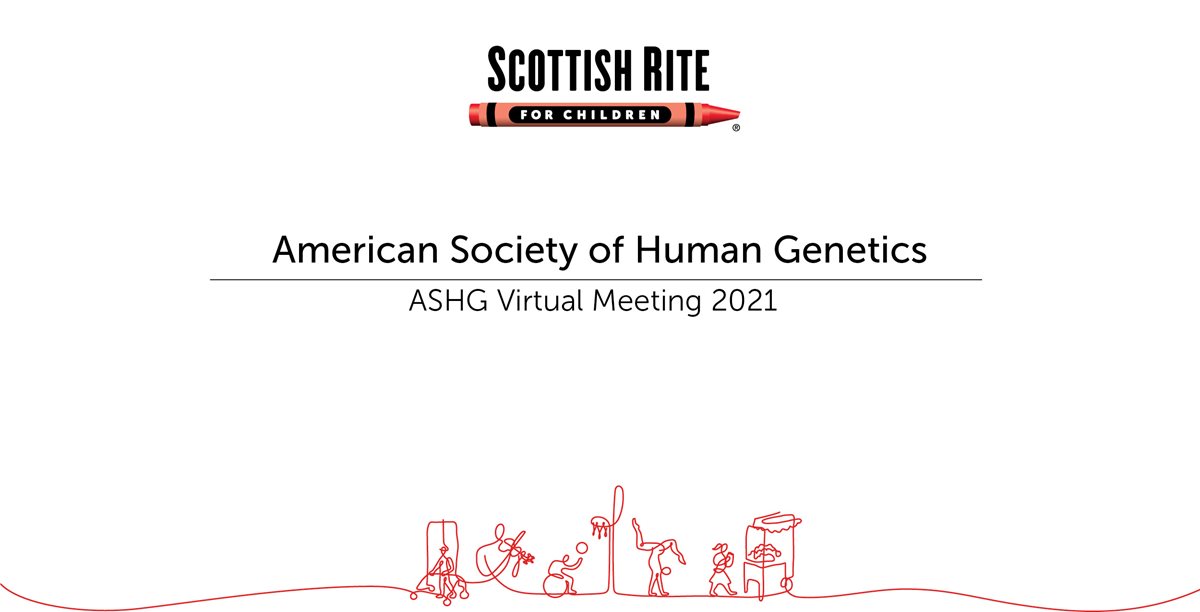
Oct 27, 2021 / Research & Innovation
Research Student Recognized at Human Genetics Conference
Scottish Rite for Children is committed to giving children back their childhood by providing world-renowned innovative care. In the Center for Pediatric Bone Biology and Translational Research, our experts support this mission by leading innovative studies that advance understanding of conditions treated at Scottish Rite.
Recently, members from our Molecular Genetics division attended the American Society of Human Genetics (ASHG) annual meeting. The mission of ASHG is to advance human genetics and genomics in science, health and society through excellence in research, education and advocacy.
Chandresh Patel, a Ph.D. candidate in Biomedical Engineering and Mechanisms of Disease and Translational Science Tracks at UT Southwestern Medical Center, is currently conducting his research under Scottish Rite Director of Molecular Genetics and Basic Research Carol Wise, Ph.D. Patel presented his latest research, A Novel Role for HAPLN1 in Skeletal Development – a project investigating adolescent idiopathic scoliosis (AIS). This year’s annual meeting brought thousands of attendees together virtually with a program that included about 4,000 presentations. From these, Patel’s presentation earned the “Reviewers’ Choice” Award – a recognition given to the top 10% of all ASHG posters presented at the meeting. “It was a team effort, and I am honored that I was able to present our work at ASHG,” says Patel.
Adolescent idiopathic scoliosis is a common childhood spine deformity that can be passed down in families, but few causes have been identified. Patel and the Scottish Rite research team sequenced 72 families from multiple ethnic groups that showed dominant inheritance of AIS and identified a rare new mutation in a gene called HAPLN1. This gene encodes the Hyaluronan and Proteoglycan Link Protein 1, a protein that is thought to provide structural and biochemical support to cartilage and intervertebral disc, tissues found throughout the spine. To understand the role of this mutation, our researchers engineered mice mimicking the mutation found in humans, using CRISPR/Cas9 gene editing. The data suggests a novel function for HAPLN1, and the animal model Patel developed will further our understanding of the role HAPLN1 may play in the development of AIS. “Our work is unraveling the complexities of AIS and is helping us to better understand the disease,” says Patel.
Learn more about our research.
Recently, members from our Molecular Genetics division attended the American Society of Human Genetics (ASHG) annual meeting. The mission of ASHG is to advance human genetics and genomics in science, health and society through excellence in research, education and advocacy.
Chandresh Patel, a Ph.D. candidate in Biomedical Engineering and Mechanisms of Disease and Translational Science Tracks at UT Southwestern Medical Center, is currently conducting his research under Scottish Rite Director of Molecular Genetics and Basic Research Carol Wise, Ph.D. Patel presented his latest research, A Novel Role for HAPLN1 in Skeletal Development – a project investigating adolescent idiopathic scoliosis (AIS). This year’s annual meeting brought thousands of attendees together virtually with a program that included about 4,000 presentations. From these, Patel’s presentation earned the “Reviewers’ Choice” Award – a recognition given to the top 10% of all ASHG posters presented at the meeting. “It was a team effort, and I am honored that I was able to present our work at ASHG,” says Patel.
Adolescent idiopathic scoliosis is a common childhood spine deformity that can be passed down in families, but few causes have been identified. Patel and the Scottish Rite research team sequenced 72 families from multiple ethnic groups that showed dominant inheritance of AIS and identified a rare new mutation in a gene called HAPLN1. This gene encodes the Hyaluronan and Proteoglycan Link Protein 1, a protein that is thought to provide structural and biochemical support to cartilage and intervertebral disc, tissues found throughout the spine. To understand the role of this mutation, our researchers engineered mice mimicking the mutation found in humans, using CRISPR/Cas9 gene editing. The data suggests a novel function for HAPLN1, and the animal model Patel developed will further our understanding of the role HAPLN1 may play in the development of AIS. “Our work is unraveling the complexities of AIS and is helping us to better understand the disease,” says Patel.
Learn more about our research.



